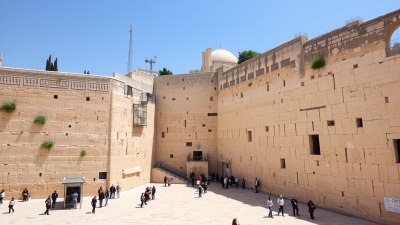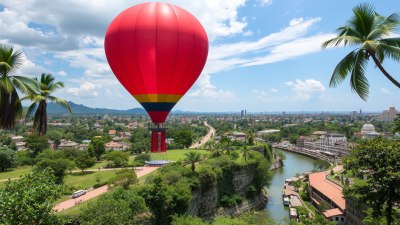The Western Wall in Israel Remembers More Than It Shares
Explore the historical significance and cultural memories of the Western Wall in Israel.

The Western Wall, a remnant of the Second Temple in Jerusalem, represents not just a physical structure but a profound symbol of the Jewish faith and identity. More than just a wall, it serves as a poignant reminder of the history, struggles, and sacrifices made by the Jewish people throughout millennia. This sacred site, also known as the Kotel, attracts millions of visitors each year who come to pray, reflect, and connect with their heritage. The significance of the Western Wall transcends time and geography, embodying a collective memory that resonates deeply within the Jewish community.
Historically, the Western Wall was built as part of the expansion of the Second Temple by King Herod. Unlike other structures, which may fade from collective memory, the Wall has withstood the test of time, enduring through conquests, destructions, and rebuilding. Despite being a remnant of a greater whole, it stands tall as a testament to resilience and faith. It is one of the few remnants of the Temple, symbolizing the spiritual center of Jewish life and prayer. The physical stone of the Wall holds within it the prayers of countless individuals who have approached it over centuries, leaving their hopes, dreams, and sorrows in the crevices of its ancient stones.
The Wall is not merely a tourist attraction; it is a sacred site where Jews from around the world come to pray. Each year, millions arrive, some to celebrate joyous occasions such as bar or bat mitzvahs, while others come to seek comfort during times of mourning. Prayer slips, known as kvitelach, are placed in the cracks of the Wall, allowing individuals to communicate with the divine in a tangible way. This act of placing a note serves both as a personal connection and a communal ritual, reflecting the deep yearning for divine intervention in everyday life.
Furthermore, the Western Wall has played a significant role in the cultural and national identity of Jews, particularly following the establishment of the State of Israel in 1948. The 1967 Six-Day War resulted in the reunification of Jerusalem and allowed for greater access to this important religious site. This event marked a turning point for Jewish spirituality and was celebrated as a moment of profound historical significance. The Wall has since become a site of national pride, where citizens of Israel and Jews worldwide commemorate moments of unity and resilience.
In addition to its religious significance, the Western Wall has also become a symbol of the ongoing conflict in the region. It serves as a physical reminder of the complexities inherent in the relationship between religion, nationalism, and identity. The location of the Wall, so close to sacred Islamic sites such as the Dome of the Rock, highlights the deep-rooted tensions that exist in Jerusalem. This dichotomy underscores how sacred places can serve as focal points not only for faith but also for political discourse and conflict.
For many visitors, the experience of standing in front of the Western Wall is awe-inspiring. It is a place where the barriers of time seem to dissipate, allowing individuals to feel connected to their ancestors who also prayed at that very spot. The act of prayer itself becomes a bridge, linking the past to the present and reinforcing the notion that history does not merely remain behind closed pages of books; it actively participates in the fabric of contemporary life.
As nations engage in dialogue about peace, the Western Wall endures as a reminder that memory can be both a tool for healing and a source of conflict. The Wall speaks of loss, hope, and the shared human experience of searching for meaning. It calls upon every visitor to reflect not only on their personal journey but also to consider the collective memory that the site embodies. The words spoken and the prayers lifted at the Wall are echoes of a longing for a better future.
In conclusion, the Western Wall is far more than its physical presence. It encapsulates centuries of faith, history, and cultural significance. Remembering is not passive; it requires engagement and introspection. Each visitor leaves a part of themselves with the Wall – a slice of hope, a piece of grief, or a prayer for something unattainable. As it remembers, the Western Wall continues to share its message of resilience, faith, and unity, binding together the many threads of Jewish history and experience.
The ongoing relevance of the Western Wall in contemporary discourse reflects a broader human tendency to seek meaning in sites of historical importance, especially in times of struggle. Therefore, as we contemplate the future of such spaces, it becomes imperative to uphold their legacy while fostering dialogues that promote understanding and coexistence among diverse communities. The Western Wall, with all its burdens and blessings, stands eternally as a message from the past resonating in the modern world.











